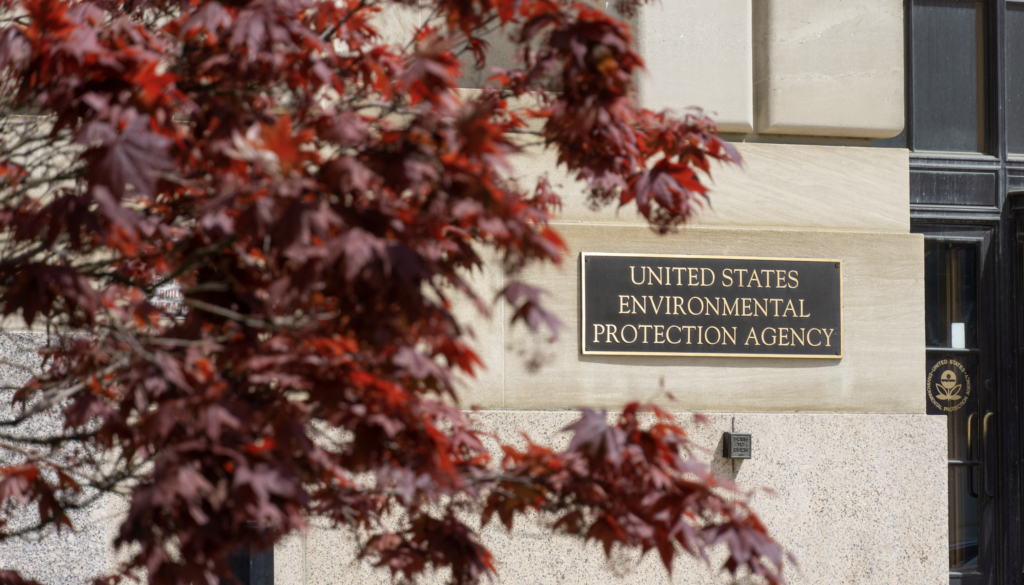EPA fends off critics claiming PFAS health levels premature before advisors complete review
Countering its critics, the Environmental Protection Agency (EPA) is defending the release of much stricter drinking water health advisories for two notorious “forever chemicals” known as PFAS before a key science advisory panel finishes reviewing studies of the chemicals.
The agency on June 15 issued updated interim lifetime health advisories (LHAs) for the forever chemicals PFOA and PFOS, alongside final LHAs for PFBS and GenX. The PFOS advisory is 0.02 parts per trillion (ppt) and the PFOA advisory is 0.004 ppt, both dramatically lower than the prior EPA advisory, set in 2016, established at 70 ppt for combined PFOA and PFOS.
“Consistent with EPA’s mission and responsibility to protect public health, EPA is issuing these interim health advisories for PFOA and PFOS to help inform the public of new scientific information on these chemicals’ health effects” before the advisory panel review is complete, the agency says on a questions-and-answers page added to its website this week.
The LHAs are non-binding and identify levels designed to protect people from harm after a lifetime of exposure to PFAS in their drinking water. The PFOA and PFOS advisories are based on studies of humans in populations exposed to the chemicals. Research has found links between the chemicals and increased risk of cancer, immune system harms, and other effects.
Issuance of the LHAs follows the EPA’s November 2021 release of updated draft PFOA and PFOS health effects analyses, which the agency asked its Science Advisory Board (SAB) to review while it develops an enforceable drinking water standard for the chemicals, due in 2023.
The SAB advises the agency on scientific matters, including the quality of data it is using. Its review of the PFOA and PFOS draft analyses is ongoing – most recently, the board canceled a scheduled May 6-9 meeting, but it continues to work on assessing the studies.
Critics of the PFOA and PFOS advisories say the agency erred in not waiting for the SAB to issue its final report on the draft studies of the two chemicals.
‘Failure of the agency’
The decision “reflects a failure of the agency to follow its accepted practice for ensuring the scientific integrity of its process,” says the American Chemistry Council (ACC), which represents more than 190 chemical companies.
“LHAs assume a lifetime of exposure. While they are non-regulatory levels, they will have sweeping implications for policies at the state and federal levels. Getting the science right is of critical importance,” ACC said in a statement. The LHAs “are based on toxicity assessments that are currently being reviewed by EPA’s Science Advisory Board. Rather than wait for the outcome of this peer review, EPA has announced new advisories that are 3,000 to 17,000 times lower than those released by the Obama administration in 2016,” said ACC.
The American Water Works Association, a nonprofit whose members include more than 4,300 drinking water and wastewater utilities, also claimed the EPA moved too quickly.
The LHAs are “extremely low and do not reflect the draft recommendations of EPA’s own expert Science Advisory Board review. The health advisory levels [are] at parts per quadrillion, undetectable by modern laboratory methods,” it said in a statement.
Sen. Shelley Moore Capito (R-W.Va.), ranking member of the upper chamber’s Environment and Public Works Committee, said in a statement she is “extremely disappointed EPA has decided to act so radically and rashly on such a bipartisan issue. Let’s be clear: No technologies exist for water systems to detect PFOA and PFOS contamination at the infinitesimal levels EPA has set” in the proposed LHAs.
“EPA’s announcement will only increase confusion for water systems’ compliance efforts and further complicate risk communication to the public. Setting these impossible levels misleads the public into thinking their water isn’t safe, even when that may not be true,” she said.
EPA defends health advisories
But the EPA in its questions and answers on the LHAs offers a robust defense for the decision to release the PFOS and PFOA advisories in the midst of the continuing SAB review.
The agency says it is evaluating extensive human epidemiological and experimental animal study data to support development of the drinking water standard. When it released the draft PFOA and PFOA analyses in November 2021 and submitted them for SAB review, the agency had already evaluated more than 400 peer-reviewed studies of the chemical that had been published since 2016, and it used new approaches to review the information. That led it to believe health harms could occur at much lower levels than when it issued the 2016 advisories.
“In light of this new information, including peer-reviewed scientific studies, EPA also announced in November 2021 that the agency would move quickly to update the 2016 Health Advisories for PFOA and PFOS to reflect the new science and draft EPA analyses,” according to the EPA’s website. “To deliver on this commitment, EPA is issuing interim updated health advisories based on the draft 2021 analyses that are undergoing review by the SAB.”
That echoes the agency’s Federal Register notice of the advisories, which mentions the new research and says, “EPA is concerned about the public health implications of these preliminary findings and is therefore issuing interim updated health advisories for PFOA and PFOS.”
In the meantime, the agency says on its website it is “working hard” to review draft SAB comments while it moves forward with its plan to craft a binding water standard.
The Environmental Working Group, Earthjustice and other environmental and public health groups welcomed the LHAs, but said the EPA needs to accelerate its timeline for issuing a final drinking water standard.
 EWG
EWG


